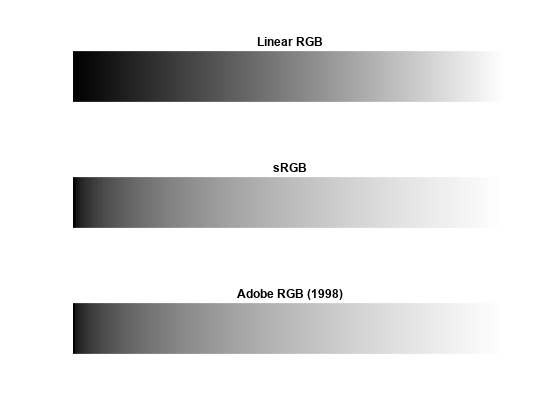lin2rgb
Apply gamma correction to linear RGB values
Description
Examples
Input Arguments
Name-Value Arguments
Output Arguments
Algorithms
References
[1] Ebner, Marc. "Gamma Correction." Color Constancy. Chichester, West Sussex: John Wiley & Sons, 2007.
[2] Adobe Systems Incorporated. "Inverting the color component transfer function." Adobe RGB (1998) Color Image Encoding. Section 4.3.5.2, May 2005, p.12.
[3] ISO 22028-2:2013 Photography and graphic technology — Extended colour encodings for digital image storage, manipulation and interchange — Part 2: Reference output medium metric RGB colour image encoding (ROMM RGB). https://www.iso.org/standard/56591.html



